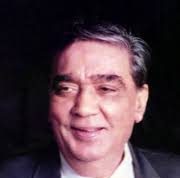 By Ashish Singh
By Ashish Singh
The political economy of Uttar Pradesh is underwritten by a sprawling and deeply embedded ecosystem of middlemen whose influence routinely outpaces the formal institutions meant to regulate society. Their presence is not accidental. It is the product of a long social memory in which the state has often appeared distant, slow, or selectively responsive, creating a vacuum that intermediaries eagerly occupy. They do not merely mediate—they shape the very terrain over which citizens must walk, charging a fee at every step. Their existence reflects a blunt truth: when people lose faith in direct access to institutions, they inevitably turn to those who promise shortcuts, interpretation, or protection.
Nowhere is this more visible than in matters of land, the most emotionally charged and economically decisive resource in the region. Across Uttar Pradesh, land-related processes remain layered with complexity—outdated records, incomplete digitisation, slow mutation procedures, and the lingering authority of revenue offices that operate through paper trails and personal networks. In such an environment, intermediaries become the unofficial interpreters of a system that is opaque by design. Their skill is not administrative expertise but social navigation: knowing whom to speak to, when to show up, and how to ensure one file moves while another stalls. People approach them not because they trust them, but because they are uncertain of navigating the maze alone. And in that uncertainty lies the middleman’s profit.
The same ambiguity corrodes the landscape of employment. Aspirants preparing for public recruitment—often for years, at considerable personal cost—operate in an atmosphere thickened by delays, cancellations, and shifting rules. This uncertainty becomes fertile ground for those who promise access or information. Even when they cannot truly deliver, their rhetoric thrives because hope is a market in itself. The moral cost of this system is severe: young people begin to believe that competence is secondary and that influence is the real merit. A society that teaches its youth to doubt fair competition corrodes its own future.
An even sharper social reality emerges around policing. Police stations in many towns function as dense nodes of negotiation where people approach law enforcement with a sense of apprehension—not because the police are absent but because citizens are unsure of how to be heard. In such an atmosphere, intermediaries slip in as interpreters of procedure. They advise complainants on what documents to bring, which officer to approach, and how much patience is required for their case to move. Their authority rests on a simple sociological fact: a person in distress is willing to trust anyone who appears confident. Their role reinforces a corrosive belief that justice is less a right than a transaction and that the law responds more to influence than to need.
Across these spheres—land, employment, policing—the middleman thrives not on the absence of the state but on the manner in which the state is present. Ambiguity becomes a form of power. Delay becomes a lever. Fear becomes an opportunity. Each hesitation in the formal system becomes an opening in the informal one. This is what transforms intermediaries into something more durable: they become the living proof that informal authority can be more effective than formal procedure. This perception is the bedrock of their economic and political strength.
A deeper look at Uttar Pradesh’s governance structure reveals a troubling possibility: the middleman has become a built-in component of how power circulates. Electoral politics, social hierarchies, and administrative fragmentation all create incentives for maintaining these unofficial actors. Local powerbrokers, caste-anchored social networks, and proximity to politicians form a lattice through which middlemen draw legitimacy. They signal their influence not through official titles but through the ease with which they enter offices, the familiarity with which they speak to minor officials, and the confidence with which they claim to resolve disputes. In a region where social reputation carries more weight than written authority, such signals are often enough.
Removing this nexus therefore cannot rely on cosmetic reform. It demands structural transformation: simplifying procedures, enforcing accountability, making land records unequivocal, ensuring employment processes are transparent from start to finish, and restructuring policing so that citizens experience it as a public service rather than a fortress approached with caution. When systems function predictably and transparently, the market for intermediaries collapses naturally.
But reform will require more than administrative efficiency. It will require a shift in political incentives—moving away from patronage-driven networks and toward institutional reliability. It will require a shift in social expectations—where citizens can approach the state directly without fear or hesitation. And it will require a shift in moral imagination—where influence is no longer seen as a shortcut but as a betrayal of fairness.
Middlemen will continue to operate as the de facto gatekeepers of everyday life in Uttar Pradesh until such change happens. Their power lies not in brilliance but in the cracks of the system. To dismantle their empire is to repair those cracks – structurally, socially, and morally. Only then can the promise of an equitable and rights-driven future move from aspiration to reality.
(Ashish Singh is a social and political scientist.)








